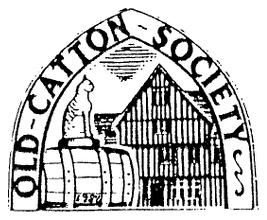Earlier in the year we were entertained by a talk covering the complete history of Norwich; at our April meeting we focussed on just one person from that history. He was James Edward Smith who was brought to life by Barbara Miller making a welcome return as our guest speaker. James was the son of a prosperous Norwich wool merchant born in 1759 at a time when Norwich was a thriving textile manufacturing city. He enjoyed the social life of a prosperous Georgian city and like many of his peers, he developed a keen interest in botany. The only way to progress with this was by studying medicine but because he and his family were Unitarian and not C of E he was precluded from both Cambridge and Oxford and he turned instead to Edinburgh University. Here he learned of Carl Linnaeus and his scientific methods of identifying plants. He moved to London after graduating and was befriended by the eminent scientist, Joseph Banks, who had heard that the Linnaeus Collection was for sale and persuaded James Smith to buy it. James in turn persuaded his father to loan him £1000 and with it he made the purchase, much to the annoyance of the King of Sweden. The Collection, comprising 3000 books and 26 cases of plants and insects, arrived on London Docks in1784 but, surprisingly, James immediately departed on a 17 month Grand Tour through France, Italy and Switzerland and it was not until 1787 that he finished unpacking the collection. He now had this mass of knowledge in his hands and turned to the task of making it accessible to the general public. So in 1788 he founded the Linnaeus Society to spread the word and then started writing “English Botany” which eventually expanded to thirty volumes and then “Flora Britannica” which went to 36 volumes. His great reputation led to him being requested to give tutorials to Queen Charlotte and her daughters, he was elected a Fellow of the Royal Society and was instrumental in founding London University (at which, incidentally, Catton’s own botanist, John Lindley, became its first Professor of Botany). But James Smith had not forgotten Norwich and he returned there in 1796 with a young wife on his arm. She was a Lowestoft girl, Pleasance Reeve, and they settled into a comfortable house at 29 Surrey Street where James set up a private museum to house his Linnean Collection and also his own extensive collection of specimens from the Himalayas and Australia. He became a prominent, well-respected citizen, taking part in various worthy enterprises, and in 1813 his great contribution to the world of botany was rewarded with a knighthood. He died in 1828 and was buried at St Margaret’s church in Lowestoft where his tomb, at the suggestion of Barbara Miller, has recently been renovated by the Linnean Society.
It was another fascinating peep into local history and Barbara Miller says it was all prompted by espying a memorial to Sir James in St Peter Mancroft church!
George Jeffries
